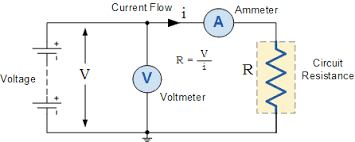Resistance and I-V Characteristics
Ohmic conductors have a constant resistance
- The resistance of ohmic conductors doesn’t change with the current. At a constant temperature, the current flowing through an ohmic conductor. At a constant temperature. the current flowing through on ohmic conductor is directly proportional to the potential difference across it.
- The resistance of some resistors and components DOES change
- When an electrical charge flows through a filament lamp, it transfers some energy to the thermal energy store of the filament which is designed to heat up. Resistance increases with temperature, so as the current increases, the filament lamp heats up more and the resistance increases.
- For diodes, the resistance depends on the direction of the current. They will happily let the current flow in one direction, but have a very high resistance if it is reversed
Three very important I-V Characteristics
- The term I-V Characteristics refers to a graph which shows how the current flowing through a component changes as the potential difference across it is increased. Linear components have an I-V characteristic that’s a straight line. Non-linear components have a curved I-V characteristic. You can do the experiment by:
- Set up the test circuit shown in the diagram:

- Begin to vary that variable resistor. This alters the current flowing though the circuit and the potential difference across the component
- Take several pair of readings from the ammeter and voltmeter to see how the potential difference across the component varies as the current changes. Repeat each reading twice more to get an average pd at each current
- Swap over the wires connected to the cell, so the direction of the current is reversed
- Plot a graph of current against voltage for the component
- The I-V characteristics you get for an ohmic conductor, filament lamp and diode should look like this:
- The calculate the resistance you can do: R=V/I \n


